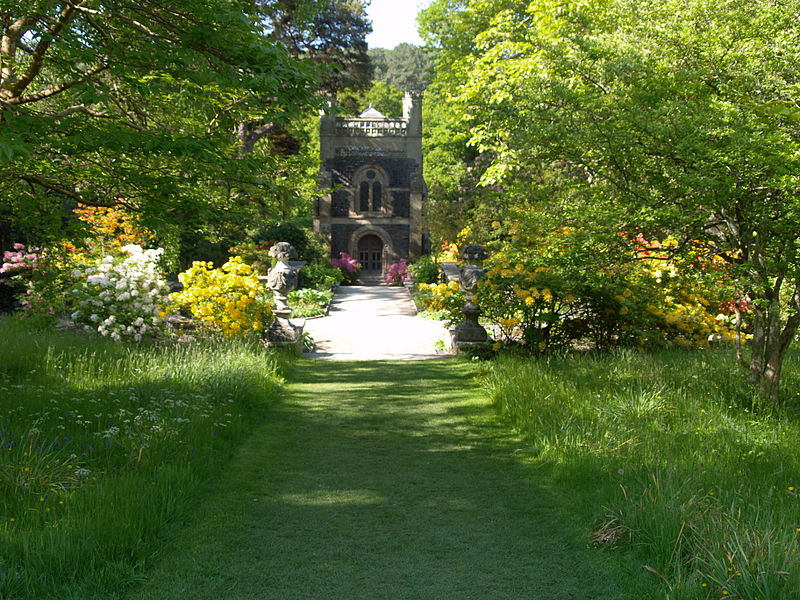Soft landscape
Contents |
[edit] Introduction
The term ‘landscape’ refers to an area whose character is the result of the action and interaction of natural and/or human factors’ (ref European Landscape Convention). For more information see: Landscape.
Softscape or soft landscape includes all types of plant life, from flowers and trees to shrubs and groundcover. All of the living horticultural elements of landscape design are soft landscape components. The term is commonly used by gardeners and other members of the landscaping profession, such as practitioners of landscape design, landscape architecture, and garden design.
Soft landscaping is a term used to describe the process of working with natural materials and other landscape elements that do not involve construction. This can include elements including turf, trees, hedges, shrubs and so on.
Soft landscape contrasts with hard landscape, which is the non-plant material used in landscaping, such as retaining walls, paving material, driveways, walkways, decking, steps and so on. For more information see: Hard landscape.
[edit] Creating a suitable soft landscape
The materials that are used for soft landscape naturally change and evolve over time, driven by growth, the climate and other conditions. Seasonal components can also play a significant factor in soft landscape planning, particularly when there is a desire to create a vibrant environment throughout the course of the year.
Plans for soft landscapes range from natural shapes accented by bright plants and grassy textures to more structured and artificially formal designs.
[edit] Planning for maintenance
Careful consideration should be given to the amount of maintenance that these elements will require to stay in good order. Lower maintenance soft landscape ideas include:
- Selecting plants that are either drought or flood resistant, depending on the average rainfall of the area.
- Planting shrubs, hedges and trees that require minimal care.
- Mulching often but turning the soil infrequently.
- Planting densely to minimise the need to weed.
- Reducing plantings that require high levels of labour.
- Using established beds and borders to structure soft landscape.
Soft landscape materials are frequently supported by hard landscaping elements. Ideally, they should work together to create a cohesive space that is integrated into to the environment around it.
The Landscape Institute (LI) is the Royal Chartered Institute for Landscape professionals and an educational charity. It was founded in 1929 (when it was known as the Institute of Landscape Architects), and the first President, Thomas Mawson, was one of the first professionals to use the title 'landscape architect'. For more information see: Landscape Institute.
[edit] Related articles on Designing Buildings Wiki
Featured articles and news
Professional practical experience for Architects in training
The long process to transform the nature of education and professional practical experience in the Architecture profession following recent reports.
A people-first approach to retrofit
Moving away from the destructive paradigm of fabric-first.
International Electrician Day, 10 June 2025
Celebrating the role of electrical engineers from André-Marie Amperè, today and for the future.
New guide for clients launched at Houses of Parliament
'There has never been a more important time for clients to step up and ...ask the right questions'
The impact of recycled slate tiles
Innovation across the decades.
EPC changes for existing buildings
Changes and their context as the new RdSAP methodology comes into use from 15 June.
Skills England publishes Sector skills needs assessments
Priority areas relating to the built environment highlighted and described in brief.
BSRIA HVAC Market Watch - May 2025 Edition
Heat Pump Market Outlook: Policy, Performance & Refrigerant Trends for 2025–2028.
Committing to EDI in construction with CIOB
Built Environment professional bodies deepen commitment to EDI with two new signatories: CIAT and CICES.
Government Grenfell progress report at a glance
Line by line recomendation overview, with links to more details.
An engaging and lively review of his professional life.
Sustainable heating for listed buildings
A problem that needs to be approached intelligently.
50th Golden anniversary ECA Edmundson apprentice award
Deadline for entries has been extended to Friday 27 June, so don't miss out!
CIAT at the London Festival of Architecture
Designing for Everyone: Breaking Barriers in Inclusive Architecture.
Mixed reactions to apprenticeship and skills reform 2025
A 'welcome shift' for some and a 'backwards step' for others.






















